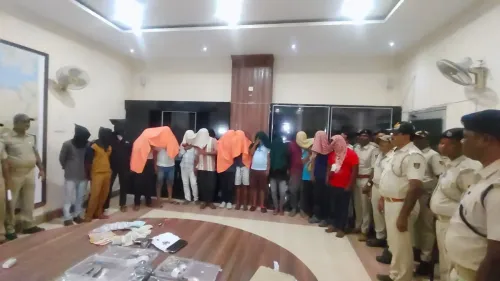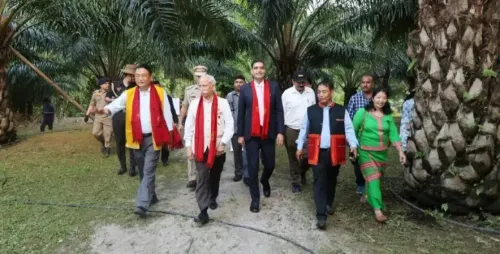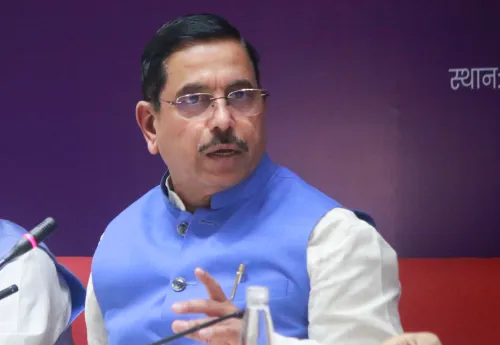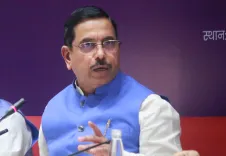How Did ISI’s 2016 Network Infiltrate India’s Security and Social Media?
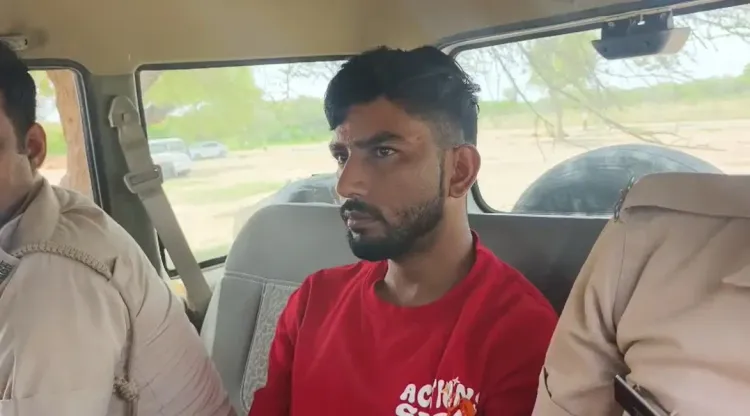
Synopsis
Key Takeaways
- Significant arrests made in the ISI spy network bust.
- Recruitment methods include financial incentives and coercion.
- ISI networks operate from various regions in Pakistan.
- Influencers are being targeted to alter public sentiment.
- Ongoing efforts are needed to combat this evolving threat.
New Delhi, Aug 16 (NationPress) In January 2025, India's Intelligence agencies initiated a secretive operation that spanned nearly three months. This endeavor ultimately resulted in the dismantling of a significant spy network financially backed by Pakistan, leading to the apprehension of security personnel, influencers, and several civilians.
Recently, a manager of a Defence Research and Development Organisation (DRDO) guest house in Jaisalmer was arrested for allegedly engaging in espionage and transmitting sensitive information to the ISI. The manager, Mahendra Prasad, is currently under interrogation to determine the breadth of information he disseminated to the ISI.
The frequency of such arrests indicates that the ISI has successfully embedded a multitude of agents within India. Intelligence agencies assert that this network, established by the ISI, has been operational since 2016, functioning from various locations in Pakistan.
This module, directed by the ISI, initially sought individuals aspiring to join the Indian Army, along with young recruits. They subsequently focused on photographers operating in areas that house sensitive installations.
The ISI commenced by recruiting random individuals in India, assigning them the task of identifying potential spies. Some were enticed with financial incentives, while others were coerced through blackmail or honey traps. This recruitment process spanned nearly a year, during which they engaged with potential spies to analyze their behavioral patterns, preferences, and habits.
What started as a network of approximately 100 individuals has now evolved into a vast army of spies. The primary modules established by the ISI in India are located in Rajasthan, Madhya Pradesh, Gujarat, and Punjab.
Besides the physical networks, Indian agencies have encountered challenges in dismantling online ones. Numerous fake profiles are being created to ensnare individuals into leaking information. The recent exposure of the influencer spying network marks a pivotal revelation.
The ISI shifted its focus to influencers, who could play a crucial role in altering public narratives. These individuals are compensated to promote positive sentiments about Pakistan.
Initially, they were tasked with voicing favorable opinions on minor issues. The grander scheme involved gradually shifting the narrative against India and favoring Pakistan.
Leveraging their extensive follower base, the ISI aims to perpetuate this narrative. For Indian agencies, dismantling these networks is an ongoing challenge. The ISI continually adapts its methods, complicating the task of countering its operations.
Numerous instances have arisen where these agencies have raised false alarms to divert the focus of Indian intelligence. While most spies are currently recruited through social media and honey traps, the ISI continues to utilize traditional espionage techniques. It is now actively recruiting operatives from West Asian countries and Nepal.
These individuals are subsequently identified, trained, and instructed to infiltrate India. Security officials have already flagged ISI operations in Nepal, which include not only infiltrating terrorists but also smuggling counterfeit Indian currency across the Nepal border.
This strategy encompasses recruiting individuals from Nepal, training them, and then dispatching them into India to gather intelligence and relay sensitive information.
Security officials emphasize that addressing this intricate issue is a monumental task. It is an ongoing endeavor, requiring Indian agencies to remain vigilant and consistently innovate as the ISI frequently alters its operational methods.

